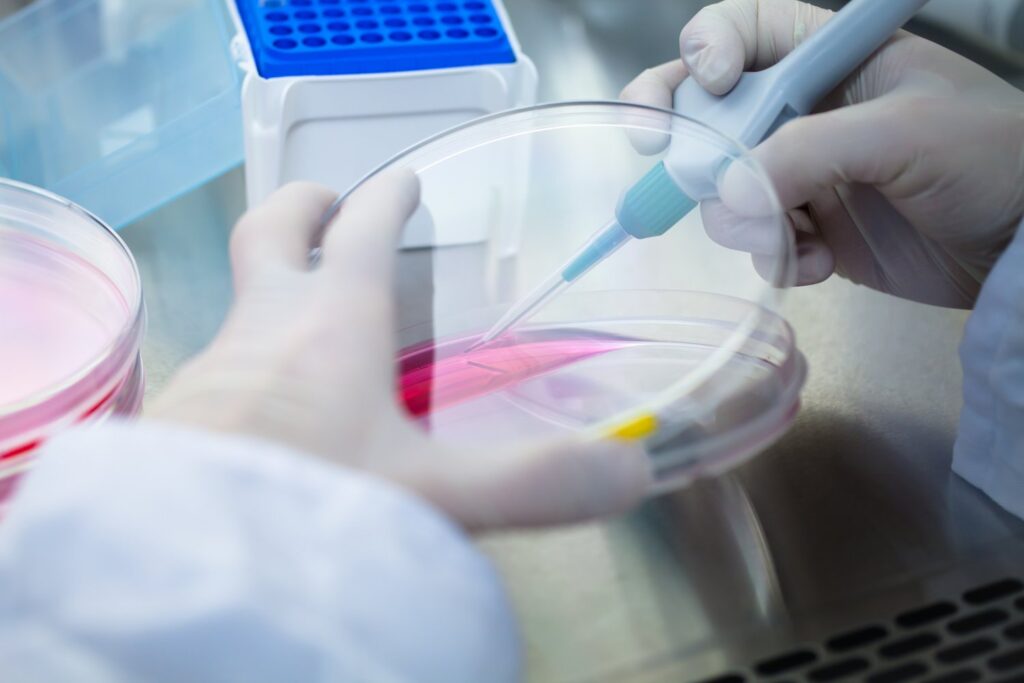The world of cellular biology has forever been a mystery, with its myriad conversations holding clues to human health.
With diseases like cancer and heart ailments wreaking havoc globally, the need to intercept and decode these cellular messages has never been more pressing. But until now, traditional methodologies have struggled, entangled in the complex nature of extracellular RNA (exRNA) carriers. Their overlapping sizes and weights have made it challenging to separate them, which is crucial for understanding their messages.
Recognizing the significance and potential of this domain, the medical diagnostic industry has witnessed exponential growth. A report by Precedence Research indicated that the global diagnostic testing market was valued at a staggering USD 165.58 billion in 2021. The projections are even more impressive, with expectations for this figure to soar to approximately USD 348.75 billion by 2030.
The report said, “ According to the Non-communicable Illnesses Key Facts report from the World Health Organization (WHO), chronic diseases would account for about 41 million deaths annually by April 2021, or 71 percent of all fatalities globally. As a result, diagnostic tests have demonstrated value in the management of chronic illness conditions as well as in the prevention, identification, and diagnosis of disease.”
The Notre Dame Device
Enter the team at the University of Notre Dame. Their breakthrough device is poised to revolutionize our understanding of cellular dialogues. In essence, the device is a masterful blend of pH gradient and electrical charge.
It distinguishes the unique “isoelectric point” of each exRNA carrier type. What’s more, the device manages this without relying on chemicals. Instead, a specially designed membrane, powered by a chip, achieves the desired pH gradient. This innovative approach allows for the efficient separation of carriers in just 30 minutes with up to 97% purity. The result? A potential goldmine for diagnosing severe conditions like cancer, HIV, and heart diseases.
One of the most impactful applications of the Notre Dame device is in the realm of disease diagnostics. With the device’s precision, early detection of life-threatening conditions like cancer, heart diseases, and HIV becomes significantly more achievable, which can be transformative in patient outcomes. The technology doesn’t just stop at diagnostics; it has far-reaching implications in the broader spectrum of research and development.
By assisting researchers in unraveling the nuances of cellular communication, it paves the way for groundbreaking discoveries that could reshape our understanding of cellular biology. Furthermore, as the device offers insights into individual cellular responses, it heralds a new age in the field of personalized medicine. By understanding how different cells react and communicate, medical treatments can be refined and tailored to individual needs, ensuring better efficacy and potentially fewer side effects.
Navigating Potential Roadblocks
The Notre Dame device, while promising, isn’t without challenges. Regulatory barriers in the medical technology sector mean it must undergo stringent evaluations to ensure safety and efficacy. This can lead to extended timelines and increased costs. Moreover, the device’s initial R&D expenses might impact its market price, potentially affecting its accessibility. Additionally, traditional labs may be hesitant to adopt this new technology, requiring the device to not only prove its benefits but also integrate seamlessly into established systems.
Emerging Players: Biological Dynamics and Their Financial Backing
While the Notre Dame device has been garnering attention, they are not alone in their pursuit of cutting-edge diagnostic technologies. Biological Dynamics, a trailblazer in the field, has attracted a substantial backing, with over USD$ 67 million in investment, underscoring the potential and confidence in their innovations.
Their proprietary lab-on-chip (LOC) platform, known as ACE, stands out for its ability to directly and selectively isolate nanoparticles from physiological solutions without the need for any sample preparation or isolation. This approach to nanoparticle isolation diverges from traditional methods, and they’re setting a benchmark by developing diagnostic assays that can detect cell-free dsDNA, exosomes, and other cellular debris.
This significant investment in Biological Dynamics hints at a broader trend in the medical diagnostic landscape, where companies are pushing the boundaries of technology to improve early disease detection and enhance patient outcomes. With such financial backing, the future seems promising for innovations that not only serve disease diagnostics but also pave the way for a deeper understanding of cellular processes, potentially revolutionizing the way we approach treatment and patient care.
Conclusion
The fusion of technology and biology is ushering in an era where the once enigmatic cellular dialogues are becoming decipherable. As pioneers like the University of Notre Dame and Biological Dynamics venture into groundbreaking territories, the promise of enhanced diagnostics and individualized treatments looms on the horizon. With these advancements, the global medical landscape stands at the cusp of transformative change. As the narrative unfolds, one thing remains clear: our pursuit of understanding the cellular realm is inching closer to a future where early detection and personalized care become the norm, not the exception.
COMPANIES TO WATCH:
Biological Dynamics, Aera company profile, NanoSyrinx company profile
Author:
Kate Sivess-Symes
Content Producer and Writer
Nano Magazine | The Breakthrough


